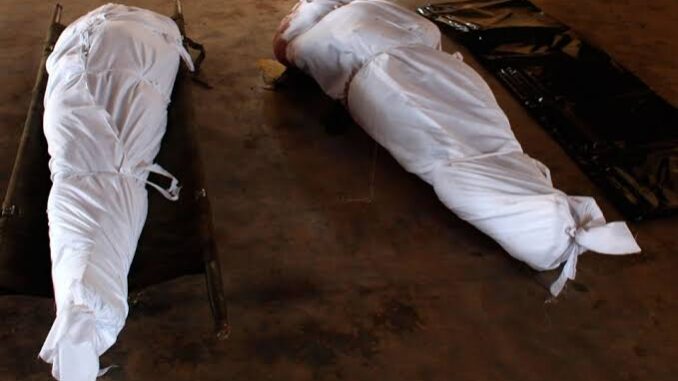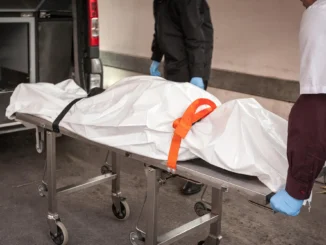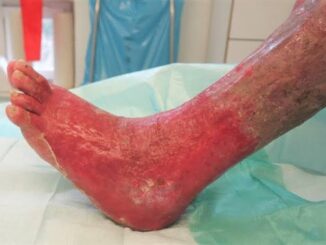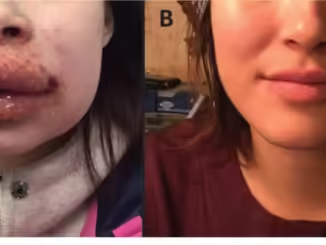
In a shocking incident that has rattled both the tattoo community and the general public, two clients tragically lost their lives in a California tattoo parlor following severe adverse reactions to a numbing cream applied before their session. The tragic event, which took place in Los Angeles on the evening of October 25, has raised critical questions about the use and regulation of numbing agents in tattoo and cosmetic procedures.
The Incident
According to preliminary reports, the two clients—identified as a 28-year-old woman and a 32-year-old man—had booked appointments at Ink Haven, a reputable tattoo studio located in the bustling heart of downtown Los Angeles. Both clients were seeking large, detailed designs, and to ease the anticipated pain, they requested a strong numbing cream. The tattoo artist, following a common practice, applied a topical anesthetic to each client’s skin before beginning the sessions.
After applying the cream, the clients were asked to wait in the lounge area for the anesthetic to take full effect. However, within minutes, witnesses observed alarming symptoms in both individuals. The 28-year-old woman reportedly began to complain of dizziness and shortness of breath, while the man appeared increasingly disoriented, clutching his chest and exhibiting signs of distress. Within a brief period, both clients lost consciousness.
Emergency medical services were called immediately, and staff at Ink Haven attempted to perform basic first aid and resuscitation. Despite their efforts, paramedics pronounced both clients dead at the scene shortly after arrival.
Investigation Underway
Local authorities and medical examiners are now working together to determine the exact cause of death, but preliminary speculation suggests that both clients suffered from a severe reaction, potentially exacerbated by high levels of lidocaine or other anesthetic ingredients within the numbing cream. Lidocaine, often used in numbing creams, can be highly effective at minimizing pain, but in high concentrations or with prolonged exposure, it can lead to toxic effects, including cardiac and respiratory complications.
Dr. Emily Rhodes, a Los Angeles-based toxicologist, commented on the incident: “Numbing creams can be very dangerous if used improperly. Lidocaine and similar agents are safe in limited amounts, but toxicity can occur if the dose exceeds safe limits or if it’s absorbed too rapidly into the bloodstream.”
Investigators are also reviewing possible interactions with any medications or underlying health conditions that may have made the clients more susceptible to an adverse reaction. However, the suddenness and severity of the symptoms in both individuals suggest that the numbing cream itself was the primary factor in their tragic deaths.
The Risks of Numbing Creams in Tattooing
Numbing creams have become increasingly popular in tattooing and cosmetic procedures, offering a solution for clients who want to avoid pain during longer sessions. However, the potency of over-the-counter creams varies widely, with some products containing higher concentrations of anesthetic agents than others. Experts note that while many individuals tolerate numbing creams without issue, certain concentrations or extended exposure can lead to toxic reactions, especially when applied over large areas of skin.
“Tattooing over large areas or for extended periods can be extremely painful, and numbing creams provide a sense of relief,” explains Marcus Torres, a tattoo artist in San Francisco. “However, it’s crucial for both artists and clients to be aware of the risks, especially with higher-strength creams. It’s common practice for tattoo artists to recommend creams, but we need better industry standards on how they should be used.”
The U.S. Food and Drug Administration (FDA) has issued warnings in the past about the potential dangers of high-dose numbing creams, but regulations around their application in tattoo settings remain limited. Since tattooing is not a medical procedure, most tattoo artists are not licensed to administer topical anesthetics, leaving the responsibility largely in the hands of clients to apply these creams themselves or seek advice from the artists.
Calls for Regulatory Action
The deaths of these two clients have intensified calls for stronger regulation and industry-wide guidelines concerning numbing creams in tattoo and cosmetic procedures. California state lawmakers and health officials have already indicated they will review current policies to prevent similar incidents in the future. Many believe that clearer labeling on products, restrictions on the concentration of anesthetics, and specific training for tattoo artists regarding the use of these products could help prevent future tragedies.
Tattoo artist Rachel Lin from Los Angeles expressed her frustration with the lack of guidelines: “We’re caught in a tough spot. Clients want pain relief, but without clear guidance or training on what’s safe, artists can’t guarantee they’re making the best choices for their clients’ health. More training or at least clearer regulations would make a difference.”
Impact on the Tattoo Community
The incident has also sparked conversations within the tattoo community, with many artists now reconsidering their use of numbing creams in their studios. While numbing agents provide a valuable tool for reducing pain, artists and clients alike are now rethinking whether the risk is worth it, particularly in cases involving large designs that require significant areas



Be the first to comment